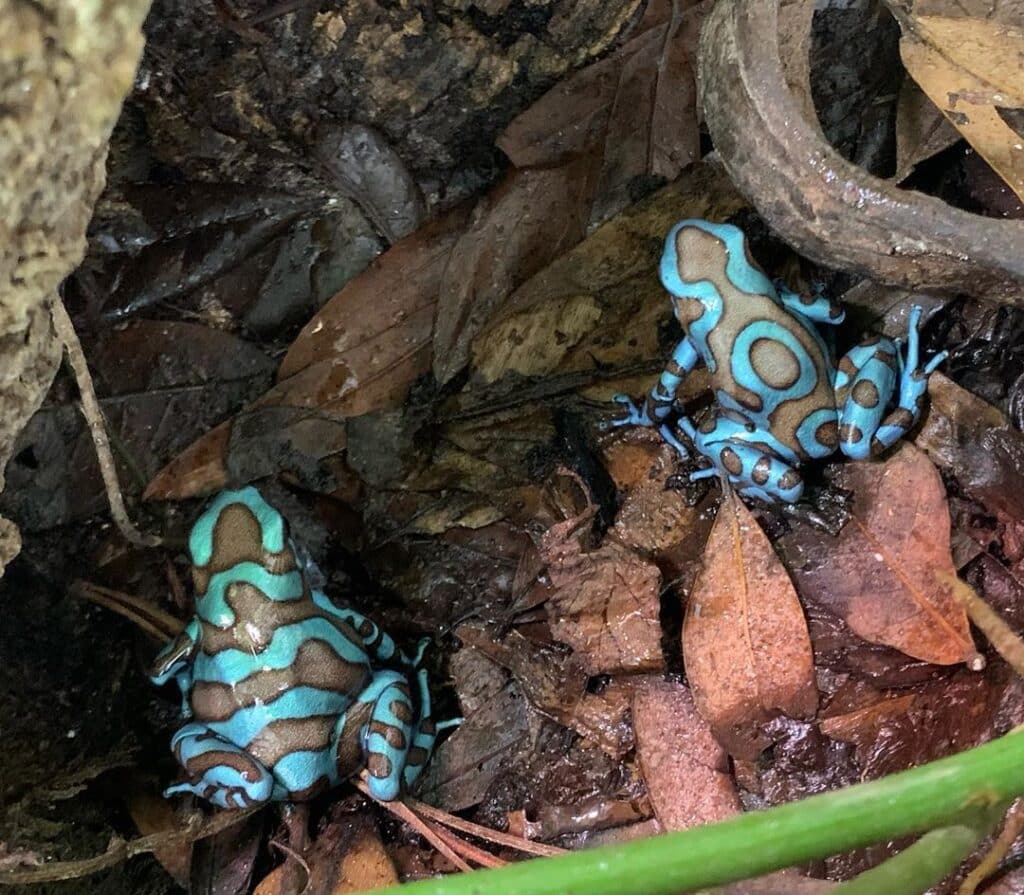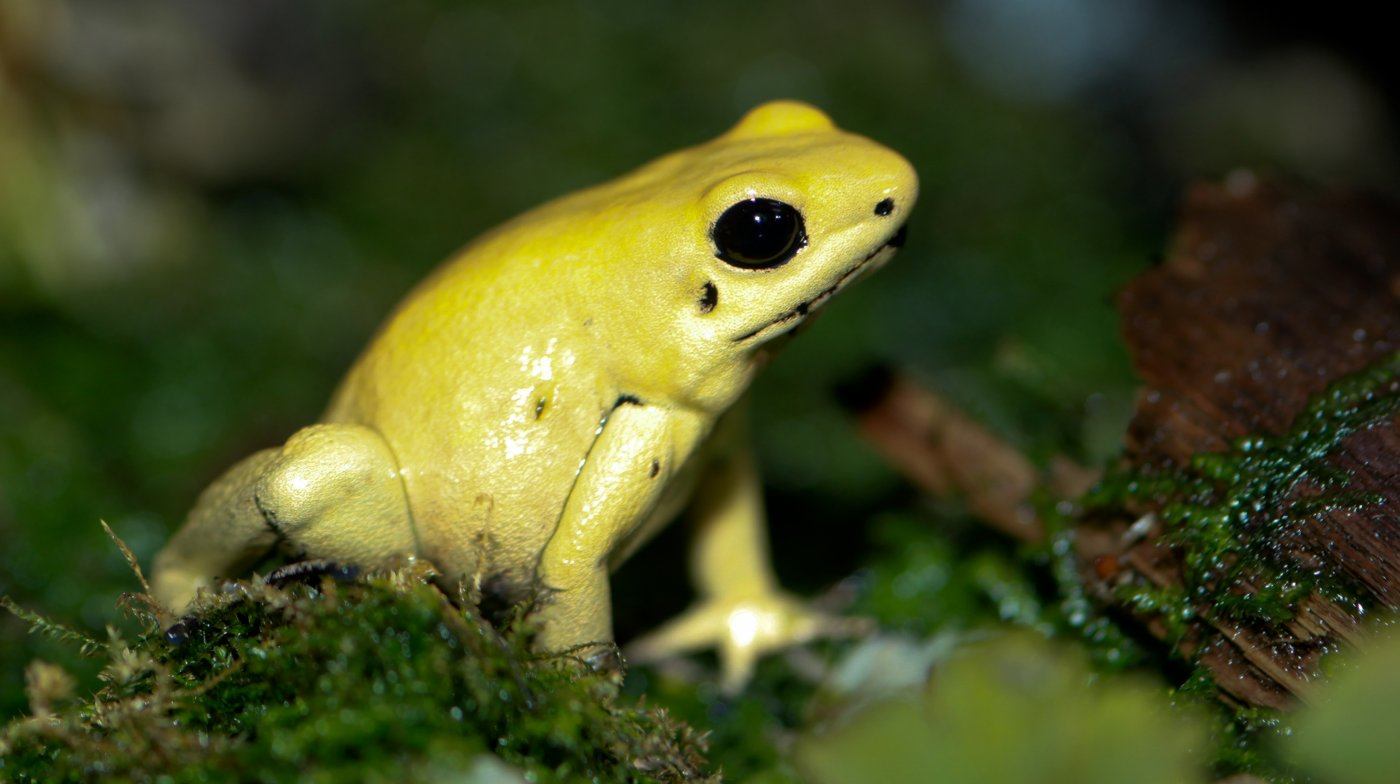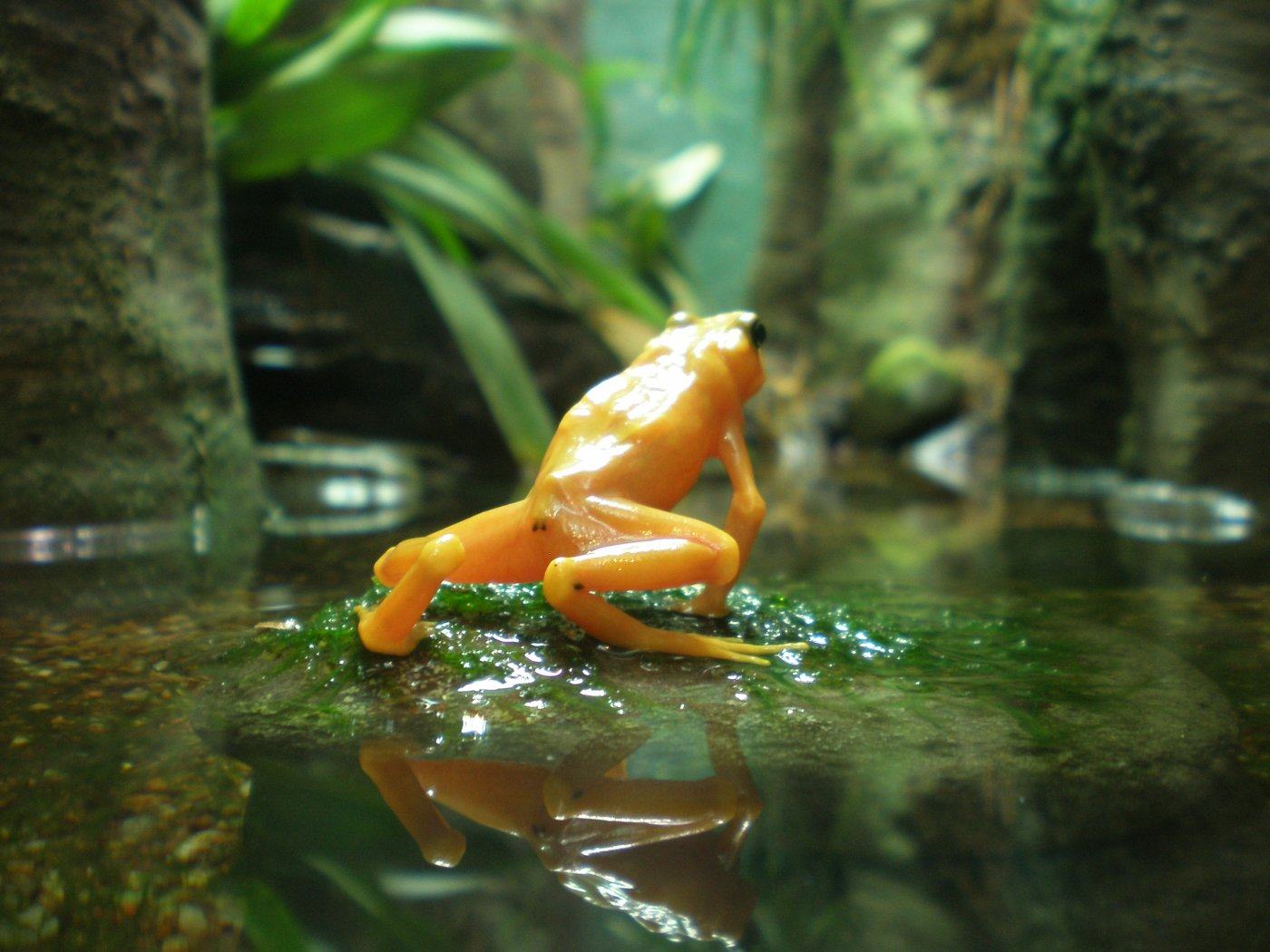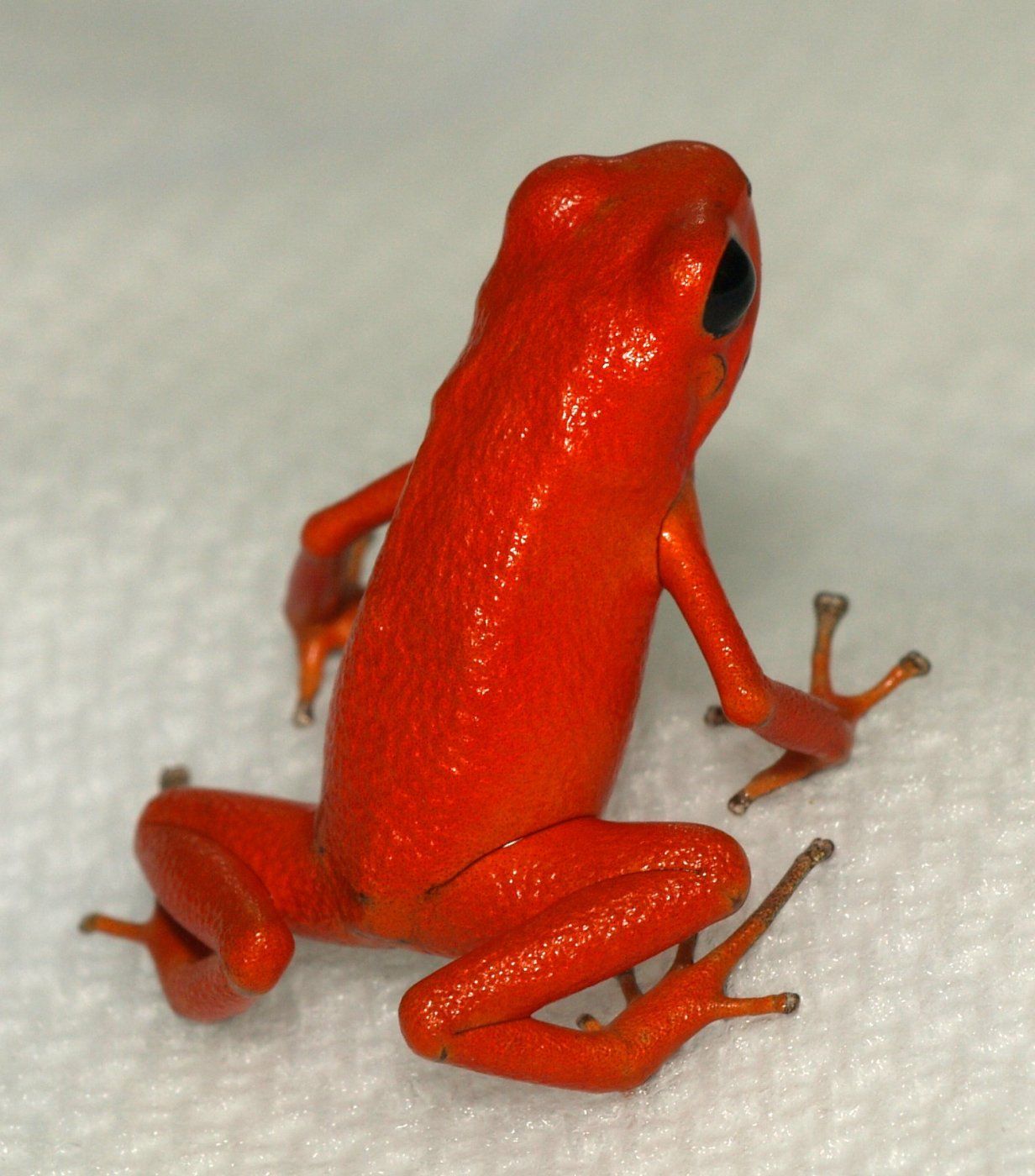Poison Dart Frog
Poison dart frogs, formerly known as the poison arrow frog, are among one of the most beautiful frog species. Don’t let their beauty fool you, they can be deadly! Let’s take a trip to the rainforest to find out more.

Habitat
The habitat of the poison dart frog is in the rainforests of Central and South America. Countries in their range include: Brazil, Panama, Costa Rica, Ecuador, and Columbia. They mostly hang out on the ground, but may jump on some lower hanging vegetation. Because of their skin, they have to live in a humid environment.
Their main food source in the wild is ants, but they can eat other small invertebrate animals including: centipedes, mites, and flies. In captivity, they can live in enclosed spaces that are warm and wet. Poison Dart Frogs they can eat crickets and fruit flies.


Poison
Poison dart frogs are actually very poisonous! It isn’t just a cute name someone came up with. The most interesting part of their poison is that their body doesn’t actually produce it. If comes from the food they eat. Still confused? Let’s clear things up.
The poison dart frog eats ants, as already stated. The ants eat bark off of trees in the rainforest. These trees are what actually produce the poison. The poison, or toxin, builds up inside the poison dart frog and becomes deadly to all predators except one! The only natural predator of the poison dart frog is the fire-bellied snake that has become resistant to the toxin carried by the poison dart frog.
So how poisonous is the poison dart frog? First off, the poison secretes out of glands all over its body. This means predators cannot avoid chomping down on the toxin on a certain area on the frog. If an animal tries, they have been known to drop dead within minutes. Other less drastic effects include swelling and paralysis. That still sounds a little extreme to chance it; I think I’ll skip out on the frog legs for dinner tonight.
Where did the poison dart frog get its name? Originally, this frog was named the poison arrow frog. The native people of the rainforest would use the poison on the frog to assist in their hunting. They would put the frog’s poison on their arrows and it would help make their arrow shots more lethal. They now use dart guns, hence the name change from poison arrow frog to poison dart frog!

Identification
Poison dart frogs come in all colors — quite literally. With over 175 species of poison dart frogs, there is no wonder why there is such variation! They come in bright reds, blues, yellows, purples, greens, and oranges. Most of them have some kind of black accent as well. They can also be multiple colors. Many have a blue and yellow pattern. The bright color serves as a warning to predators to stay away. This is very different than many other frog species which are colored green or brown to blend in with their surroundings.
The size of these little critters is very small. They are about as long as two staples and pack a big poisonous punch for their size. Poison dart frogs have four toes without webbing like several other frog species. Because of this, they are not great swimmers and aren’t found in water very often.
Life Cycle

While development of the poison dart frog is very similar to other frogs, the child-rearing and paternal component is much different. The mother frog will lay her eggs under a leaf or inside of a hole in the ground. She will then leave and the daddy frog will come and fertilize the eggs. Dad mode kicks in immediately. He protects the eggs until the mother comes back when they hatch.
When the eggs hatch, the tadpole squirms unto their mother’s back. She will carry the tadpole like a backpack to a bromeliad for them to live until they transform into a froglet and eventually become a frog. The bromeliad is actually a plant that will hold pools of water. Remember that the poison dark frogs are very small, so the tadpoles are even smaller! They do not need as much water to swim in as other tadpoles.
The tadpole will live in the bromeliad for 6-8 weeks and will dine on mosquito larva and algae. Another very bizarre food item is unfertilized eggs fed to the tadpoles from their mother. Yum! The key point is unfertilized here, meaning these eggs would never turn into a frog. It is still a little odd, right? Poison dart frogs sound like they should win the mother of the year award!
Fun Facts
There are a few species of frogs that live in the rainforest that look very similar to the poison dart frog. Some of these species are not actually poisonous to predators, but the coloring makes the other animals think they are. Isn’t that a cool trick? Nature can be very cunningly smart sometimes!
Where to find them
Poison dart frogs are commonly found in zoos. You can usually see them in the reptile house, you know the one in the dark? That is because these animals are nocturnal, meaning they are awake at night and typically sleep in the daytime. Also note, all frogs are amphibians, not reptiles. Amphibians start their lives in water and move to land when they transition into adulthood.
In captivity, humans can control what the frogs are eating. This means they are not fed anything with the toxins that their bodies turn into a poison. Therefore, the frog is not poisonous and cannot harm you! Many people even enjoy having the poison dart frogs as pets.
Would you like to have a poison dart frog in your room? Their color could bring something extra to your home and would help you find your pets if they get out of their enclosure!









Having discovered a fondness for insects while pursuing her degree in Biology, Randi Jones was quite bugged to know that people usually dismissed these little creatures as “creepy-crawlies”.







